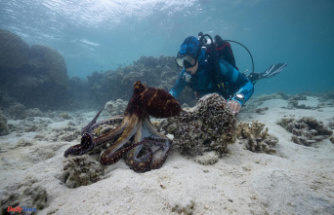According to new research, the massive, 58-foot-tall wave that crashed into the waters off British Columbia in November 2020 was the largest ever "rogue" wave.
Scientists said that the monster wave that struck off Vancouver Island's coast reached a height of approximately four stories. The wave's characteristics were described in a February 2 study in the journal Scientific Reports.
Rogue waves swells larger than normal that are found in open water, and can grow to twice the height of any other waves nearby. These seemingly random and unpredictable events are often called "freak" and "killer waves. Not much information is available about how they form.
Johannes Gemmrich is a University of Victoria researcher and lead author of the study. He said that the 2020 event was proportional to the surrounding waves and was "likely" the most extreme roguewave ever recorded.
"Only a handful of rogue waves have been observed in high sea state, and nothing of such magnitude," he stated in a statement. "The likelihood of such an event happening is one in 1,300 years."
A buoy on Vancouver Island's western coast, located just over 4 miles from Ucluelet picked up the huge swell.
Rogue waves have been dismissed by mariners as exaggerated stories. They were believed to be nautical myths for centuries. Scientists have been able to confirm that rogue waves exist in recent decades, but it is still hard to measure and observe them.
1995 was the year that Norway's first rogue wave was recorded. The "Draupner Wave" was the first recorded rogue wave. It reached nearly 84 feet in height, more than twice the size of the surrounding waves. Researchers said that the 1995 rogue wave was larger than the one measuring off Ucluelet. However, the record-breaking 2020 event was almost three times as large as other waves around it.
Scientists could learn more about rogue waves by studying them, according to Scott Beatty, CEO at MarineLabs. The company operates a network marine sensors and buoys throughout North America, including one that recorded Ucluelet.
He stated that "the unpredictability and sheer power of these walls of water' can make it incredibly dangerous for marine operations and public," in a statement.
Beatty stated that being able track and analyze unusual events will increase maritime safety and protect coastal communities.
He said that "the potential to predict rogue wave remains an open question, but our data is helping us better understand when, how, and where rogue waves can form, as well as the risks they pose."












